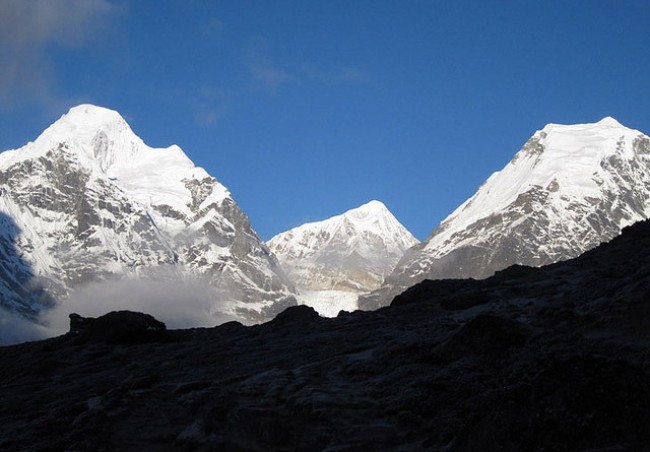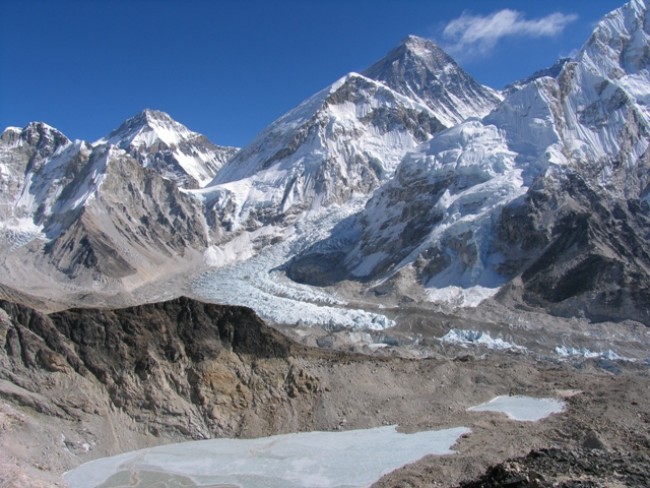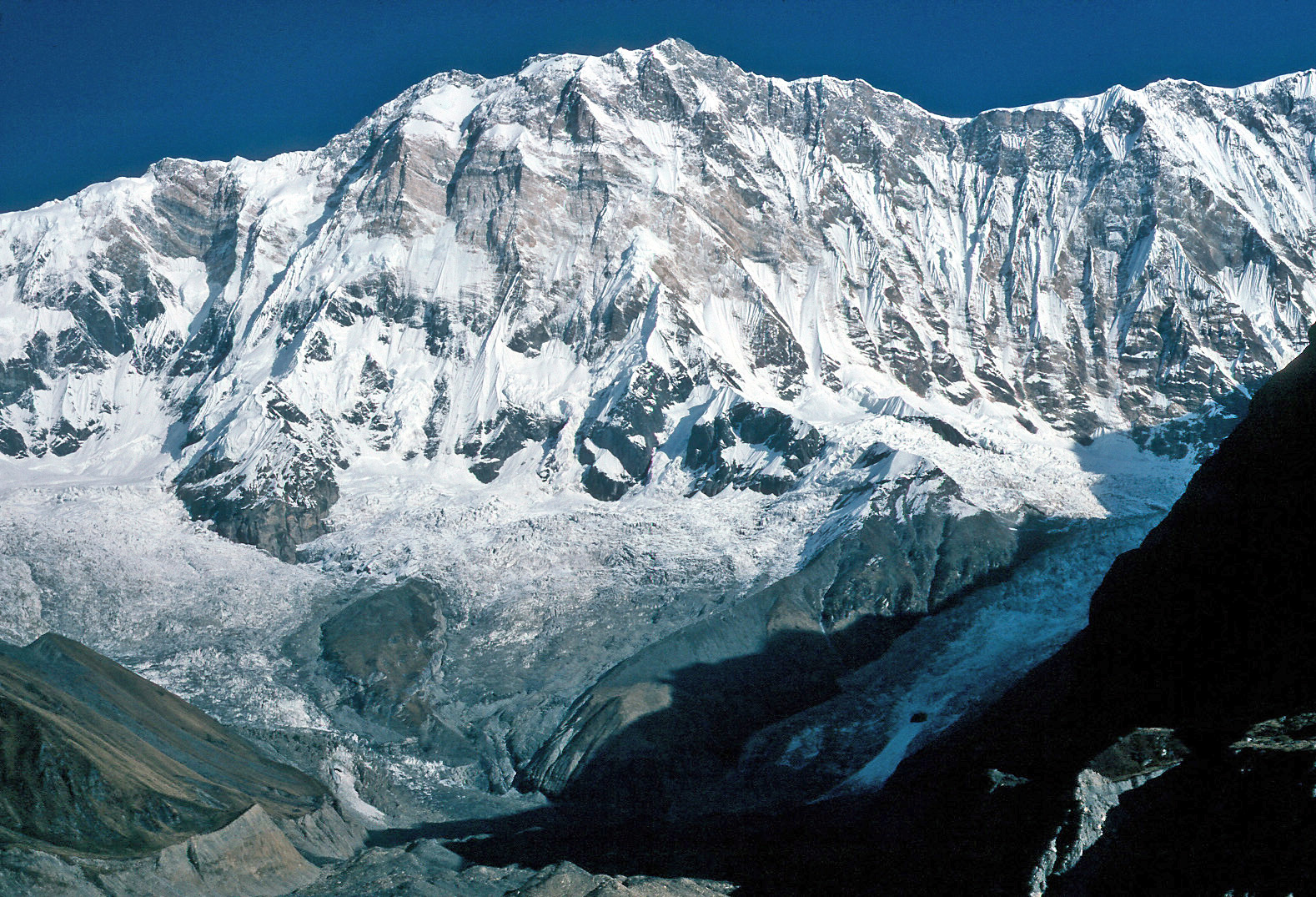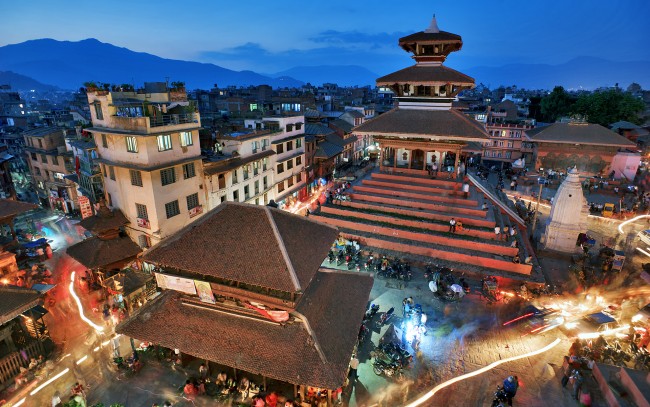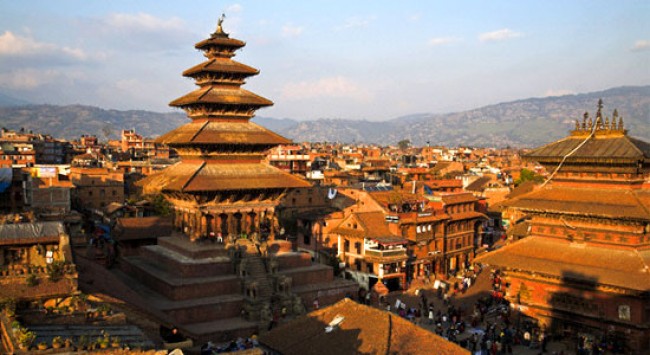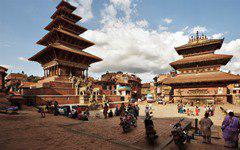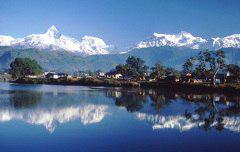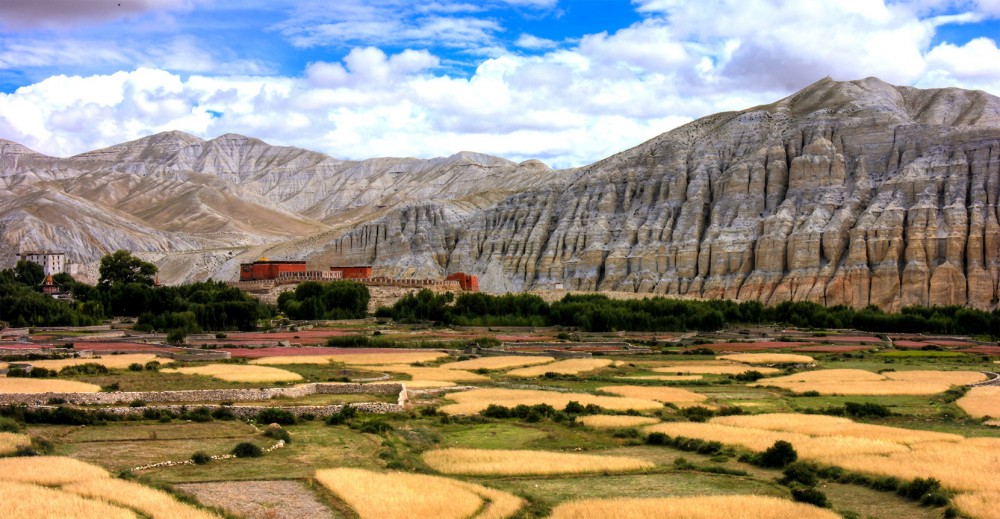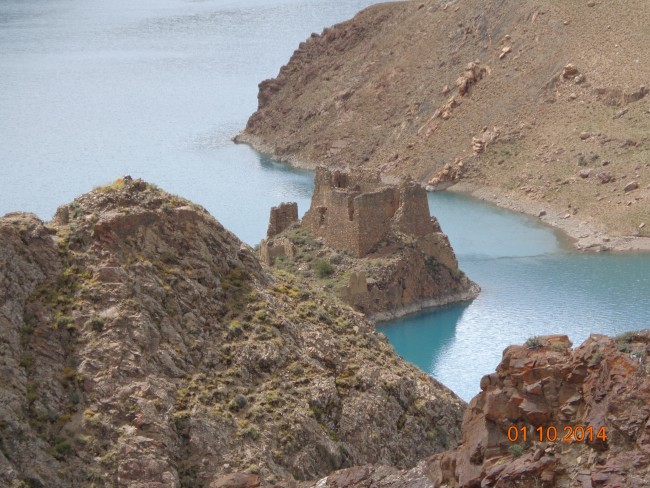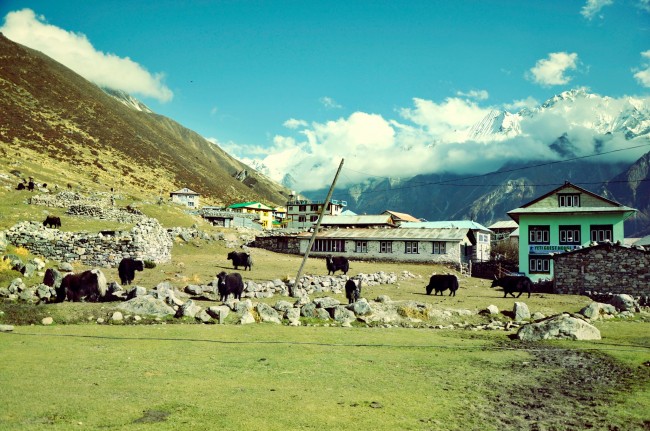Post Views: 6
Everest & the Gokyo Trek -18 Days Tour
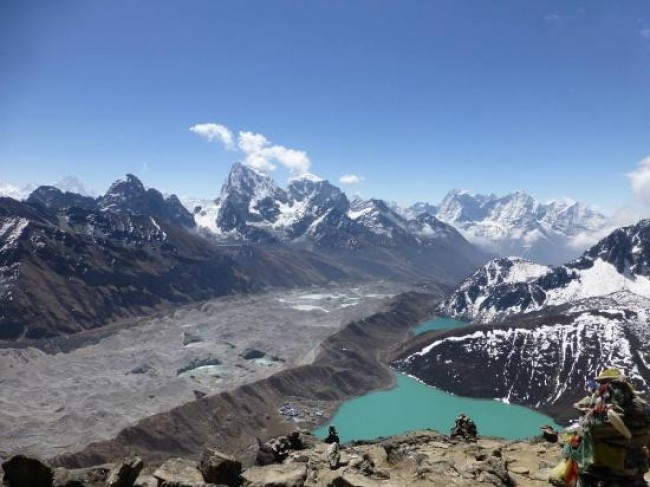
Definitely the Everest region is not only famous for the gorgeous and giant Mt. Everest, it also offers the superb view of Lhotsu, Nuptsu and Makalu mountains. The Everest region trek is itself an adventurous trek but if you trek Everest region through Gokyo Lakes then your excitement will be doable with much more thrill. Everest trek through Gokyo Lakes will offer you to explore the fabulous Gokyo valley, source of the grand Dudh Koshi River – the large Ngojumba Glacier, the famous Cho La pass, and the renowned viewpoints of Gokyo Ri and Kala Patthar along with Everest Base Camp.
Supplier of services: ClimberCA International Consortium. About Us
https://t.me/ClimberCA – telegram
+7966 065-53-44 – whatsapp/viber
e-mail: your@climberca.com
Note: ClimberCA offers to you the best service & the firm prices of all kind of services we offer on our web-pages. Some services, which we offer to you, are truly unexampled.
The Everest trek through Gokyo lakes- 18 days is appropriate for those experienced trekkers only who have a passion for the adventurous trek and who are physically fit because the track is extremely evaluated as a complex challenging trek. The adoring and skilled hikers having passion to face the challenge and having an ability to walk at least 6-7 hours per day with a light backpack.
Permanent link >>>
Itinerary
Day 01: Kathmandu Arrival at International Airport (1338 m/4,390 ft) You will meet our representative at arrival gate who will welcome you and take you to your hotel. You can take rest or move around the Kathmandu Durbar square. At evening, you can have traditional welcome dinner with us and also you can enjoy the Nepalese cultural program. You will stay in your Hotel at Night
Day 02: Kathmandu sightseeing and trekking preparation
Kathmandu holds the historical and spiritual place so today we can start our tour after breakfast, from the place which are considered as World Heritage sites; Kathmandu Durbar Square (Basantapur) where you can see Kumari temple, Museum, Kaal variable (the god of destruction), Taleju Vawani (the goddess temple once opened in the 9th day of great festival Dashain) , Pasupatinath ( the biggest holy temple of Hindus), Swayambunath (the famous monkey temple), Boudhanath (the large Stupas in the world).Then we will move towards Bhaktapur (Bhadgaoun) where you can see other durbar square, traditional houses, traditional Newari Museum. Then you will be taken to Nagarkot hill from where you can see Kathmandu Valley. After that you will take to Latitpur where you can see next durbar square hold Nepalese history. At Evening you will be free for personal activities. You will have your night stay in Kathmandu.
Day 03: Kathmandu– Lukla Flight (2800m/ 9383ft) then trek to Phakding (2,652m/8700ft)
As we finish our breakfast early morning, we will attend domestic flight from Kathmandu to Lukla which is the entrance of our trek. We can reach tensing Hillary Airport within 35 min enjoying the magnificent green landscape and White Mountains. This is the most wonderful air route in the world terminating in a spectacular hillside surrounded by high mountains.As we reach Lukla, we will meet our group member and we will finish our packing and arrangement to start our trek via the wealthy Lukla village to Phakding. Today to adapt the atmosphere there, we will have short trek. Nevertheless, if you are interested for additional trip then we go to a nearby Monastery. We will spend our night at hotel in Phakding.
Day 04: Phakding- Namche Bazaar (3,440m/11,290ft)
After breakfast we will start our walk in the morning. Today the trek is enjoyable with few short ascend and descend with several crosses over Dhud Koshi River and fabulous scene of Mt. Thamserku (6623/21729 ft) via Benkar village. We will reach at Monjo, gate way of Sagarmatha National Park crossing many bridges on the way where our trekking permit will be checked to keep record of trekkers and local trekking staffs. Regular down walk take us to the last village of Namche Bazaar that is Jorsale. We will arrive at Hillary suspension bridge on walking through the river bed. We will walk ascend now, towards Namche bazaar and enjoy the glorious and closer vista of Kwangde Pea, we can be mesmerize by Kusum Kangaru, Mt. Everest, Lhotse, Tawache and many other peaks. We will get pleasure of this panorama by sitting in Chautara. We will spend our night at colorful village of Namche Bazaar which is the entrance of Khumbu region.
Day 05: Acclimatize at Namche Bazaar
Today we will stay at Namche Bazaar for adaption with atmosphere. Health specialist suggested staying energetic and moving throughout the rest day so we will either hike to Thame or trip to Khunde or lighten up and explore Namche Bazaar itself. Namche Bazaar is the center of Khumbu region and is full of facilities such as ATMs, internet café, shops, restaurant, bakery and a colorful market every Friday and Saturday evening. We can also find Government office there. The few upright walk for a day will help us for proper acclimatization. We will be taken to the tourist visitor center near the headquarter of Sagarmatha National Park where we will observe a collection of things narrated to the previous Everest climbers, Sherpa culture and also we get an opportunity to find out the various plan and animal life of the Khumbu region. We will also visit an interesting visit to Khumjung. Then we will ascend further to the popular airfield at Syangboche. Snowy peaks of Kongde and Thamserku surround the beautiful valley, Khumjung. We will also walk to Hillary school which is located at same site. We return to Namche Bazaar after having lunch and spend our night there.
Day 06: Move to Dole (4,410m / 13,152 ft)
First of all we will finish our breakfast then we will move steeply out of Namche Bazaar to Kyangjuma village where we can be pleasure by the stunning panorama of Thamserku, Katenga and Ama Dablam. The most laborious climb of the day will be to cross the Mong la, a very pleasant location on the edge of Mt. Khumbila. We will have lunch and take a rest at the top of Mong La enjoying the gorgeous and grand scene of surrounding snowcapped Mountains and valleys. The abundance of the flora and fauna together with wildflowers and Rhododendron will be the most marvelous aspect of our trail today. It will be usual to mark wild lives such as Pheasants, mountain goats and vagueac musk deer. Passing through forests, some waterfalls and bridges then we will reach at a small place with few teahouses, Dole and stay there overnight.
Day 07: Hike to Machherma (4,470m / 14,663 ft)
At first, we ascend gradually via picturesque crest over Dole and we will rise up to Lhabarma (4220 m) to Luza (4360m). This trek offers us superior views of Cho oyo, Kantega and Thamseku. We have to walk through many summer arrangements and an attractive village of Luza. As we climb up from Luza we can observe the Dudh Koshi valley, deep like a gorge with its absolute sides. We will reach Machherma, trekking along the hill side over roaring Dudh Koshi and passing via some small settlements and sandy urges. Marchherma is the last foremost hamlet on the way to Gokyo. We can enjoy the striking stream running down from the Kyajo Ri and Phari Lapche Mountains through the middle of the village before draining into the Dudh Koshi. We must pay our visit to the Himalaya Rescue Hospital for speech regarding altitude sickness at Machherma. It is very important because its preventative measure and primary cure.We will spend our night there.
Day 08: Step towards Gokyo (4800m/ 15,744 ft)
Today we will enjoy the tremendous scene of both down the valley and the Mt. Kangtega, Thamserku and Northern part of Cho-Oyu (8153m) while climbing a ridge Chorten. After some gradual walk through a Chorten, we will reach to Pangka (4480m). We walk down to the River bank before starting to hike up to the mortal moraine of Ngozamba Glacier. It is a vertical hike on the moraine. As we cross an Iron Bridge above stream the trial levels out when it chases the valley cross the first Lake, Longpongo (4690 m). There we get an opportunity to scrutinize the Lama footprints on a stone. We will be awestruck by the sparkling turquoise blue sheet of water at the spectacle of the second lake, Taboche Tsho. Few minutes’ walk takes us to third lake, the two linked of rolling streams. Gyoko village lies by the third lake and Cho- Oyu Mountain as a background sets is a wonderful sight. After lunch, we will walk around the third lake, Dudh Pokhari. We will spend our night at teahouse in Gokyo.
Day 09: Acclimatization at Gokyo Valley
Today we will have full day rest but we should not stay idle. If weather is excellent then we will grab a chance to climb Gokyo Ri today instead of next day to take pleasure of the excellent scene of Everest region. Or we can have another option to explore to six lake of Gokyo as this is very popular beside its grand view. So we will trek about 3 km north of Gokyo to watch fourth lake (Thonak Tsho) and fifth lake (Ngozuma Tsho). Stay at Gokyo village overnight.
Day 10: climb Gokyo Ri (5357m ) and Thaknak (4750m)
Today early morning we will Gokyo Ri which is the highlight of the trip. Climbing Gokyo Ri is definitely challenging and laborious as takes about 4 hours gradual ascend to reach top. We will supposed to be surrounded by wonderful mountains like Kanguru, Thamserku, K 43, Kangtega, Taboche, Cholatse, Makalu, Lhotse, Nuptse, Everest, Changtse, and Pumori. It will be the most memorable trip for us. We descend from Gokyo taking breakfast to Thaknak. We will pass our night at Thaknak.
Day 11: move to Cho- La- Pass(5367m) and Dzongla (4830 m)
We will start our trek early in the morning because Cho La Pass is also an emphasize trip. The path even itself is not difficult, it is vertical and greasy. We have to incessantly climb through a gorge and a rocky trail from Phedi. When we cross the edge of stationary Lake we will reach at the top of the Cho la pass which is adorned by prayers flag. Again we can feel we are covered by the mountains because at south, Ama Dablam leads over a range of mountains, Cholatse rise on west, Lobuche at East and Baruntse erects vertical to our right. We will walk further to reach Dzongla from where we will be mesmerized by the same peaks completely. We will pass our night in local lodge inDay12: trek to Lobuche (4940 m)We will walk quite shorter today so that we can get lots of time to view and enjoy the surroundings. We descend from Dzongla and pass from the bridge. We then slant via grassy way enjoying the panorama of Lobuche peak. Finally we will extend through an edge. We can rest in Lobuche for whole night after twisting round throughout the large gruff river bed.
Day 13: Walk to Gorakshep (5170m) then Everest Base Camp (5364 m)
We will walk head to Gorakshep today in the morning where we will see snowcapped peaks intimating us the top of the world. The way through Gorakshep leads us through the lateral moraine of the Khumbu Glacier so after a lunch and concise rest, we will hike to Everest base camp. Even we cannot see the grand Mt Everest from base camp; we can really realize the risk of the brave mountaineers hiking through the Khumbu Icefall. We will spend our night at Gorakshep.
Day 14: Trek to Kala patthar and Pheriche (4280)
Mt Everest is clearly visible from Kala Patthar so we will trek there early in the morning to grasp the remarkable scene of shining, bright Mt Everest by the sunrays. On the way to Kala patthar, our mouth might be open to say wow for the many picturesque scenes and to enclose them in camera. As we stand on Kala Patthar Junction, we will rush to hike the rocky ledge close to pinnacle manifest by payer’s flags. After reaching at top of the Kala Patthar our eyes stock to watch incredible Himalaya’s panorama. We can take many pictures there for the lifelong memories. We will have our breakfast there and return to Gorakshep. Definitely we will spend our night in Gorakshep.
Day 15: Trek to Namche Bazaar through Pheriche – Pangboche – Tengboche
Today we will have the much easier walk, running down the lower altitude following the route of mortal moraines at Dughla and the large valley of Khumbu River. We have to cross many attractive Sherpa settlement like Pheriche, Orsho and Shomare. We can either walk to the Gompa in upper Pangboche or we can walk regular way to reach Pangboche from where we can descend to Imja River and up by forest to Debuche. We will take our lunch in Tengboche and carry on to hike through Rhododendron and Junipers tree. We will cross over the bridge of Dudh Koshi River, the trail then chase the Dudh Koshi ravine sliding hastily by pine forest. We will ultimately reach Sansa. We will reach Namche Bazaar within a few hours walk. We can enjoy the last view of Lhotse, the lean of Everest and Tengboche from Namche Bazaar. Then we will take rest and relax at our Lodge in Namche Bazaar.
Day 16: Hike to Lukla
The path is steeply downwards so we must be controlled and walk slowly and continue our walk. Now we will cross the suspension bridge above the roaring Dudh Koshi. We have to cross through dense forest and Sherpa villages. Then eventually we will reach Lukla where we can stretch our painful legs and remember all the experiences of last two weeks. Today we will enjoy Sherpa culture and relax there.
Day 17: Fly back to Kathmandu
After the long mountain journey, we will return Kathmandu today. Early morning flight takes us to Kathmandu. You can rest and relax whole day at hotel. If you want to do some shopping for your family and friends then you can explore Thamel. You can also take help of Actual Adventure guides. Overnight stay at Kathmandu
Day 18: Departure from Kathmandu
After Buffet Breakfast, you will be free Till Departure. Then you will be transferred to Kathmandu Airport.
Other trek Information
Stay Safe
Altitude Sickness: The main and common risk while trekking above about 2500m is Altitude sickness. Altitude sickness is caused by acute exposure to low partial pressure of oxygen at high altitude. The available amount of oxygen to sustain mental and physical alertness decreases with altitude. Available oxygen drops as the air density itself, the number of molecules (of both oxygen and nitrogen) per given volume, drops as altitude increases. So don’t ignore, if you have any symptoms then descending to a lower altitude is the only option.
Water: Have some means to purify water, iodine or a fine ceramic filter are the best options. The streams should be considered polluted and whilst bottled water is often available, the disposal of plastic bottles is a problem.
Electricity in Nepal
Nepal is a developing country, Outside of major cities area electricity on trekking can be scares. You should have to pay 100-800 NRs per hour to charge goods on many lodges and also many tea-house treks, including in Annapurna base camp trek, Everest Base camp trek and many others treks also. Chargers often won’t work on low power solar systems you find right up in the mountains so u can buy alternative bayonet light to electricity power plug converter, which will only works in low voltage is highlow. The standard Nepalese electrical outlet is a three-pronged triangle so bring three-pronged triangle chargers.
Nepal Climate information
Nepal is a landlocked country which lies in Hindu Kush Himalayan region. Nepal has monsoonal climate having four main seasons: spring, summer, monsoon, autumn and winter.
Below is a general guide to conditions at different seasons:
January to March (winter): In this season temperature will decrease at often 0°C (32°F) at night, with extreme cold at high elevations. It is possible to trek in places like the Everest region during the winter but due to extreme cold weather and heavy snow fall it may be quite difficult than as usual.
April to June (summer): In these months it is quite warm and dry weather. There is an abundance of blooming flowers in the Himalayas at this time, with rhododendrons, in particular, adding a splash of color to the landscape. This season is the best time to undertake mountain expeditions.
June to September (Monsoon): There will be heavy monsoonal rainfall in this season. Rains are generally lighter in high Himalayan reasons. In this season the mountain ranges are not often visible due to the clouds.
October to December (autumn): These months are cool and clear which is due to the end of monsoon, there is little dust in the air so this is the best season to visit the hilly and mountainous regions.
Nepal Visas information
Visa in Nepal can be acquired on arrival at Tribhuwan International Airport, Kathmandu and also at the border entry points in Kakadvitta, Birgunj, Bhairahawa, Nepalgunj, Gaddachowki border of Nepal – India and Kodari on Nepal-China border. Visa can also acquire at the nearest Nepal Embassy. For visa renewal purpose you can contact at Department of Immigration, Kalikasthan at Kathmandu. A valid passport and one passport -size photo with a light background is required. Visa can be obtained only through payment of cash in the following currency: Euro, Swiss Franc, Pound Sterling, US Dollar, Australian Dollar, Canadian Dollar, Hong Kong Dollar, Singapore Dollar and Japanese Yen. Credit card, Indian currency and Nepali currency are not accepted as payment of visa fee.
Multiple entry – 15 days – US$ 25 or equivalent convertible currency
Multiple entry – 30 days – US$ 40 or equivalent convertible currency
Multiple entry – 90 days – US$ 100 or equivalent convertible currency
Respect to Local People
In Nepal, “Namaste” or “Namaskar” is said to an older or high-status person with palms together, figure up. It is used to greet a person in place of goodbye or hello. There is no limitation how many times you say “Namaste” but, it is better if you say once per person, per day. If You want to say “Thank You” then you can say “Dhanyabaad (Dhan-ya-baad)”
